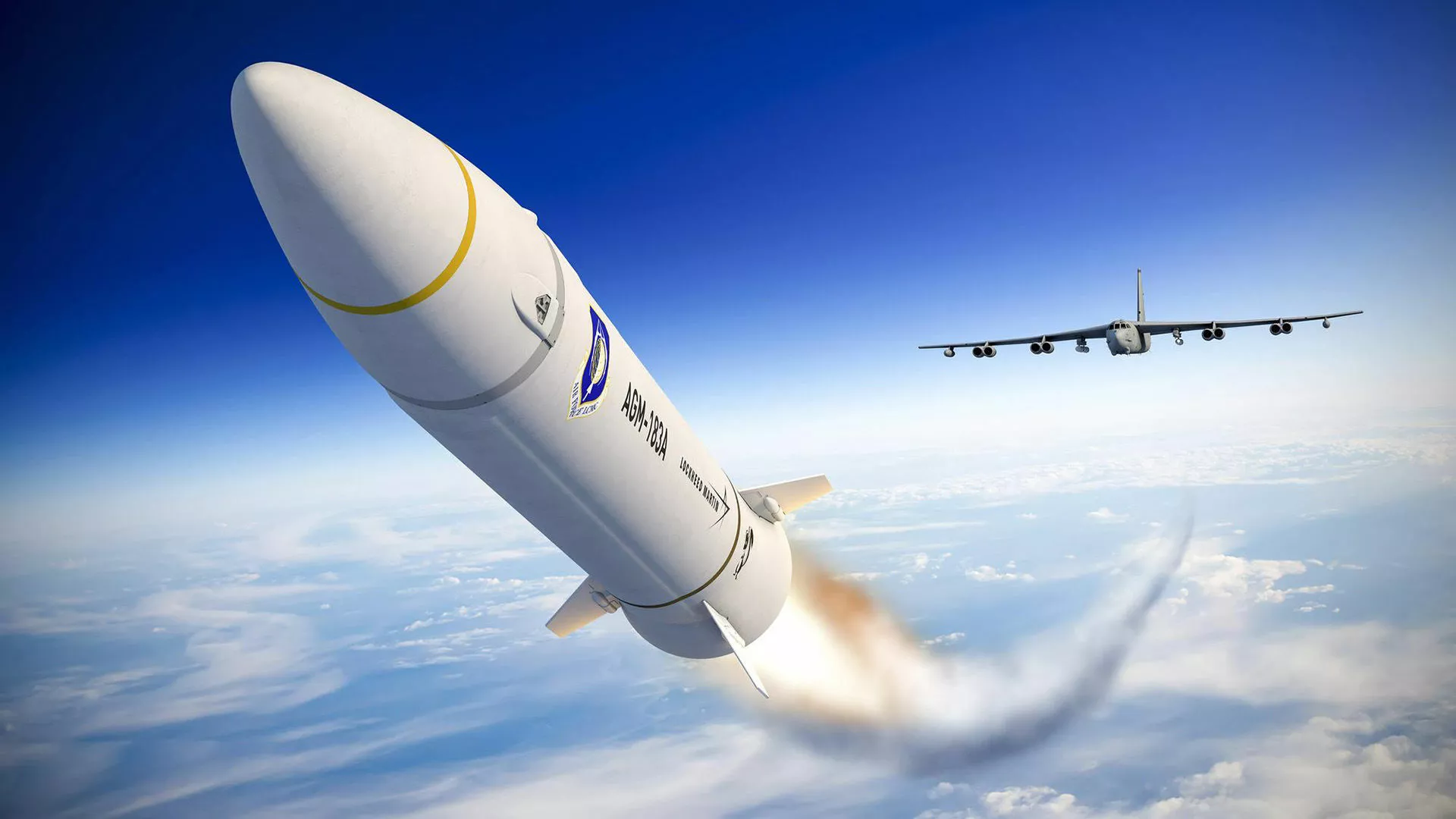The US Air Force's long anticipated first powered flight test of the AGM-183A Air-launched Rapid Response Weapon (ARRW) hypersonic missile was scrubbed this week when the booster vehicle failed to launch from the B-52H Stratofortress bomber. The eighth flight test on April 5, 2021 in the skies over the Point Mugu Sea Range in California ended with the missile returning to base still attached to the mothership.
The latest test of the AGM-183A was intended to be the first time that the hypersonic missile was to be dropped from the B-52H and ignite its rocket booster, as opposed to the previous seven tests, which were all captive carry flights. The purpose was not only to demonstrate the safe release of the missile from the bomber's wing, but also to study the booster performance, booster-shroud separation, and simulated glider separation.
According to the Air Force, the test was cancelled when the missile failed to complete its automatic launch sequence. Because it failed to deploy, the missile was returned intact so program engineers could assess and repair the defect.
The goal of the ARRW program is to produce a compact hypersonic missile that can be carried by the B-52H and other aircraft as a stand-off weapon to destroy heavily-defended, high-value, time-sensitive land targets on short notice.
Scheduled to reach early operational capability by September 2022, the AGM-183A is designed and built by Lockheed Martin. After launching, the missile is boosted to high speed by a rocket motor. After the missile separates from the booster shroud and motor, it becomes an unpowered hypersonic glider that accelerates to up to Mach 20 (12,892 knots, 14,385 mph, 23,875 km/h) as it falls from high altitude and maneuvers to strike targets at a distance of up to 1,000 miles (1,600 km), destroying them with a kinetic impact equivalent to a large bomb.
"The ARRW program has been pushing boundaries since its inception and taking calculated risks to move this important capability forward," says Brigadier General Heath Collins, Armament Directorate Program Executive Officer. "While not launching was disappointing, the recent test provided invaluable information to learn from and continue ahead. This is why we test."
Source: US Air Force





